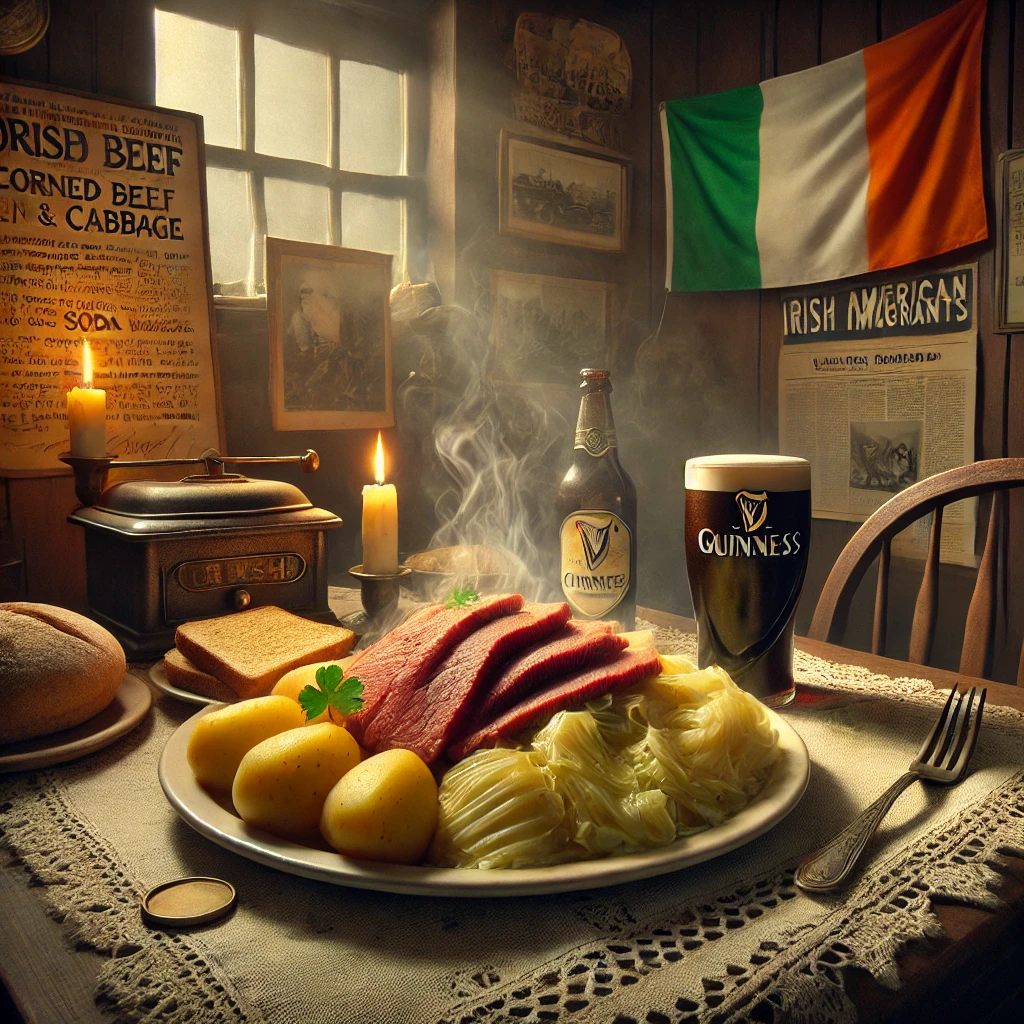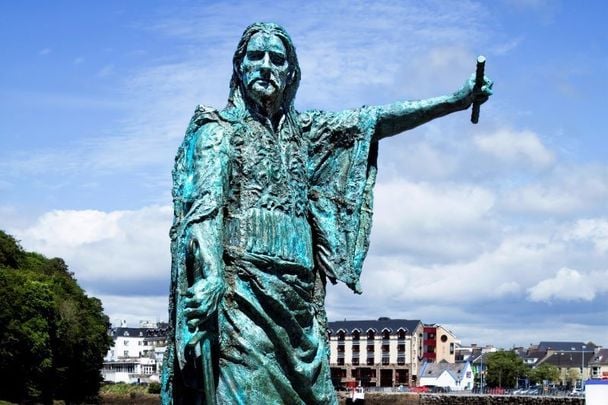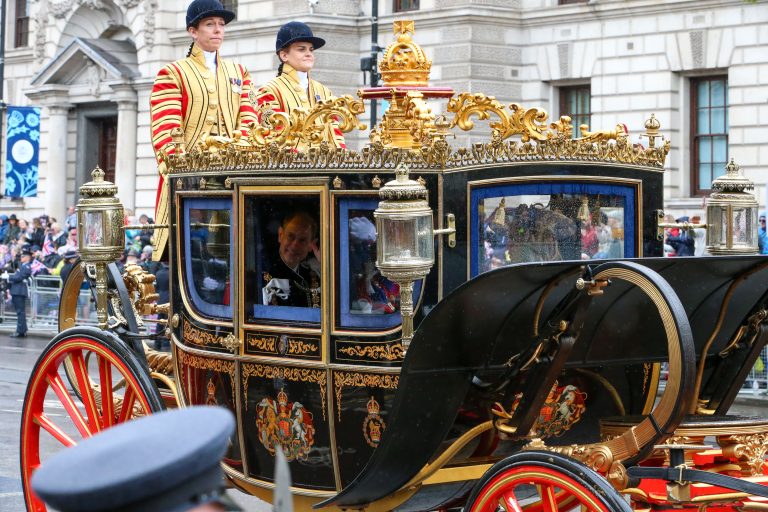
The scent of sizzling cabbage wafts through Irish-American kitchens every March, curling through generations of memory and myth. Plates are piled high with corned beef and cabbage, steaming with nostalgia, yet whispered through confused lips: “Wait, isn’t it supposed to be bacon?”
Ah, but here lies the beauty of history—where migration, struggle, adaptation, and pride simmer in the same pot. Because the dish you think is tradition is often reinvention, and the myth you taste might just be survival served with mustard on the side.
A Tale of Two Tables: Ireland vs America
In Ireland’s rural past, the traditional fare of the common folk was not corned beef, but salted pork—most often, bacon or cured ham, served with cabbage and potatoes. It was affordable, accessible, and steeped in generations of peasant practicality. The idea of corned beef? That was a luxury, a product mostly exported to British markets and foreign ships.
Ironically, the Irish raised the beef but couldn’t afford to eat it.
So, when the diaspora crossed the Atlantic, they didn’t bring corned beef in their luggage. They brought memory, song, sorrow, hope—and the culinary habits of a people who had survived on the humble and hearty.
The Irish in America: Hunger Meets Adaptation
But America was no continuation of the old way. It was a thunderclap of new realities. In the tenements of New York and Boston, Irish immigrants met the markets of Jewish and German butchers, and in those butcher windows, they found salted beef brisket—cheaper than pork, more filling, and surprisingly familiar in taste.
Thus was born a fusion dish—corned beef and cabbage, not out of tradition, but out of necessity. It wasn’t Ireland’s dish—it was America’s Irish dish. And over time, it became sacred.
So now, each St. Patrick’s Day in America, while parades fill the streets and green rivers flow, corned beef and cabbage simmers on stovetops, not because it was old Irish custom, but because it’s what made sense in a strange, new land.
A Dish of Survival, Not Ceremony
The irony remains delicious. The food eaten in honor of St Patrick’s Day in Ireland 2025 is often more local, more diverse, and less anchored in corned beef. Modern Ireland may enjoy artisan lamb stews, fresh seafood, or the return of the traditional bacon and cabbage. But in Irish-American homes, the scent of brisket still carries the echo of Ellis Island, sweat-stained labor, and generations striving to belong.
So the next time you lift your fork, know this: you’re not just eating a dish—you’re consuming a legacy of adaptation, resistance, and cultural evolution.
Want to Explore More About St. Patrick’s Day and Its Deep Roots?
👉 St Patrick’s Day 2025: Festivals Across Ireland’s Towns and Cities for You to Discover
Final Thought: The Myth on the Plate
History isn’t always what we think it is. Sometimes it’s cooked in a pot instead of written in a book. Sometimes it’s corned beef instead of bacon, and sometimes it’s a bowl of shamrock instead of a sword.
But in the end, it’s all storytelling. And on St. Patrick’s Day, storytelling is what the Irish do best—on stage, in the pub, in the streets, and yes, even in the kitchen.






2 thoughts on “Why Irish Americans Eat Corned Beef and Cabbage—Not Bacon—on St. Patrick’s Day”
Comments are closed.